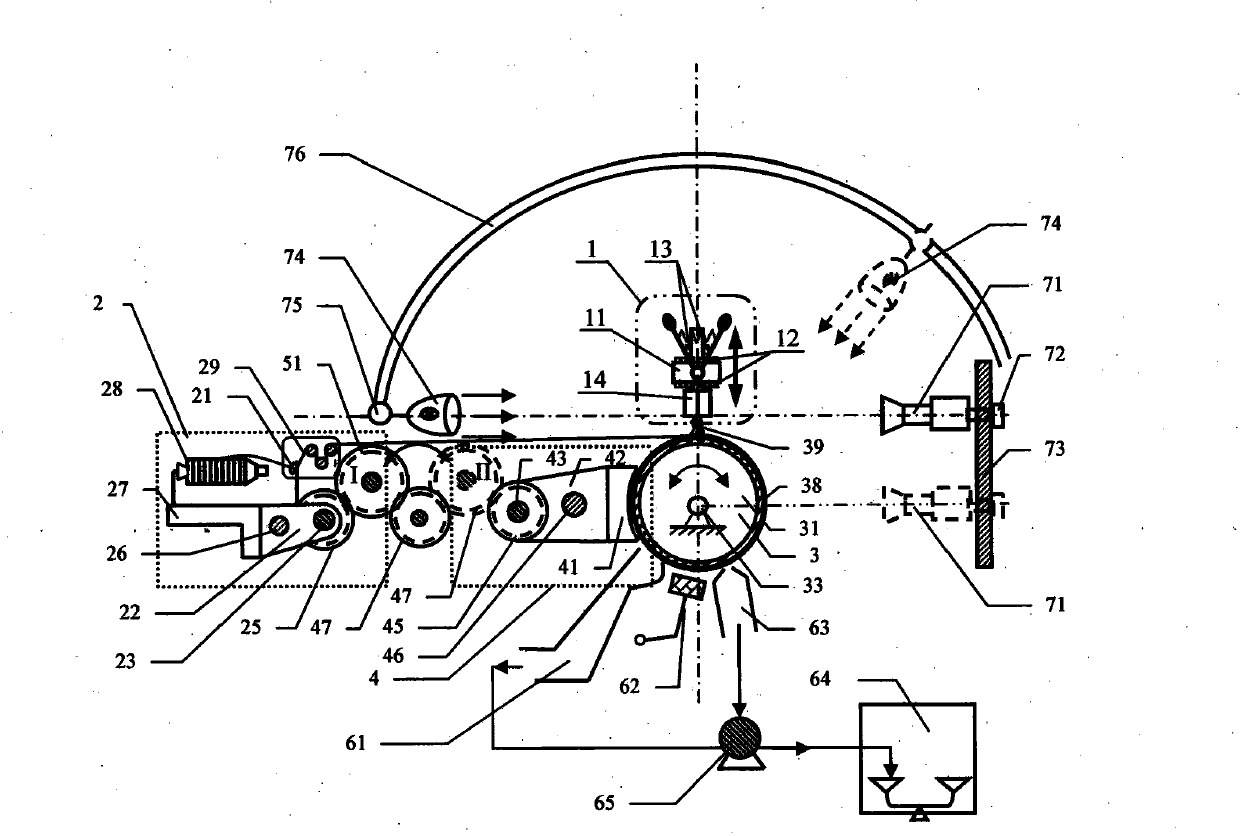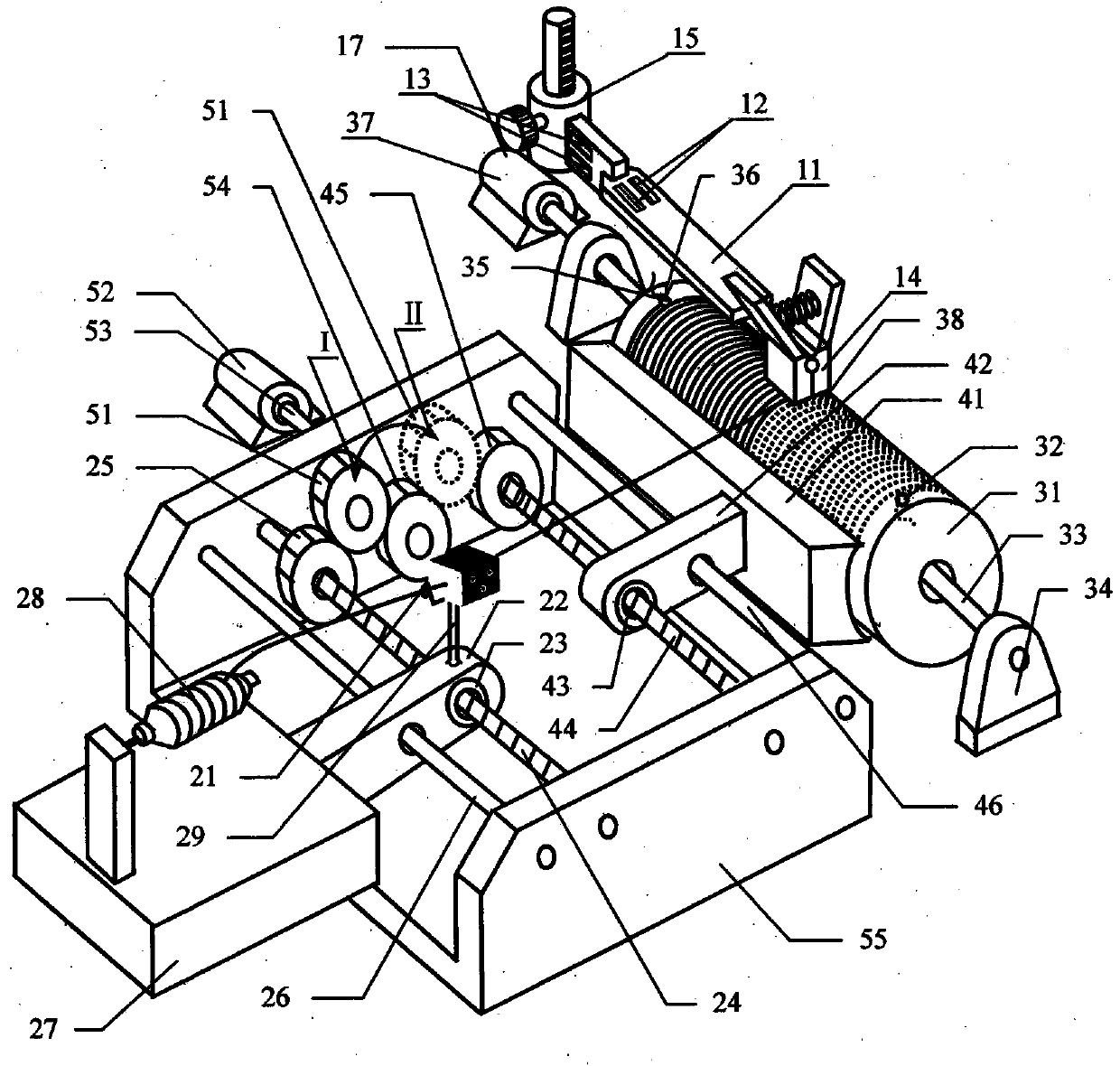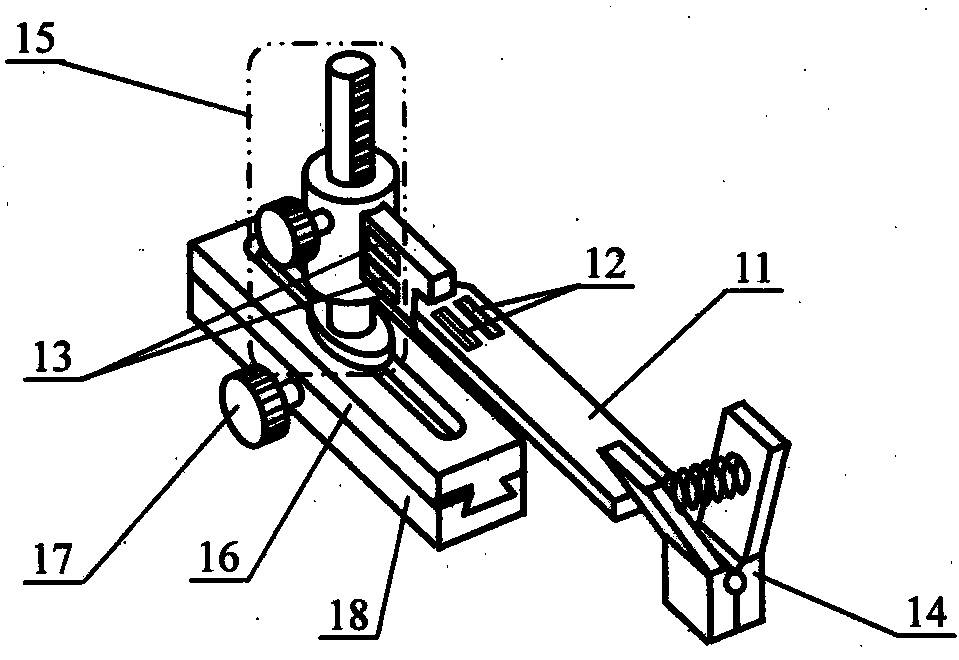Measuring device and method for fluffing and balling shape as well as hair bulb stripping of yarn
A technology of pilling and measuring device, used in textile testing, testing wear resistance, material inspection products, etc., can solve the problem of inability to observe the pilling process, poor repeatability of test data, and inability to obtain the appearance and morphological characteristics of hairiness and fluff. And other issues
- Summary
- Abstract
- Description
- Claims
- Application Information
AI Technical Summary
Problems solved by technology
Method used
Image
Examples
Embodiment 1
[0098] Using the measuring device and method of the present invention, a complete set of measurements from the first step to the third step is performed on the pilling property of the wool / viscose 2×6.1tex double-strand yarn with a yarn number of 12.2tex , its measurement condition parameter and actual measurement result are shown in the column of embodiment 1 of the following table and the process measurement curve of the second step is shown in Figure 5 . From the measured results, it can be seen that the number of hairballs per unit area (Nt and Nn), the diameter of hairballs and their coefficient of variation obtained from the tangential observation and the normal phase observation of the worn-out full wool strands are in good agreement, indicating that the two Formal observations are effective and accurate. Observation of the normal overall appearance, the wound yarn sample basically has no plush effect, while the ground yarn sample has obvious plush effect, which is re...
Embodiment 2
[0100] Adopt measuring device and method of the present invention, the fluffing and pilling of the blended yarn of wool and PTT fiber that yarn number is 15.8tex is done from the process measurement and calculation of the first step and the second step described, its Measurement condition parameter and actual measurement result are shown in the following table embodiment 2 column and the process measurement curve of described second step sees Image 6 . From the measured results, it can be seen that the number of hair balls per unit area, the diameter of hair balls and their coefficient of variation obtained from the tangential observation and the normal phase observation of the blended yarn of wool and PTT fiber after abrasion have a good consistency, indicating that the two forms The observations are effective and accurate. Observation of the normal overall appearance, the plush effect of the wound yarn sample is not obvious, but the plush effect of the polished yarn sample...
Embodiment 3
[0102] Using the measuring device and method of the present invention, the pilling and pilling properties of cotton and linen blended yarns with a yarn number of 17.8tex are compared, measured and calculated from the first step and the third step, using a CCD camera 61 Observation of upper position and projection light source 64 second quadrant 165 °, then CCD camera 71 moves to lower position and projection light source 74 turns to observation of first quadrant 25 °, the measurement condition parameters and actual measurement results of the experiment are shown in the following table embodiment 3 Column. From the actual measurement results, it can be known that the number of hair balls per unit area obtained from the tangential observation and the normal phase observation of the worn cotton and linen blended yarn is very small because the cotton fiber is not pilling, and the diameter of the hair balls is too large because of the pilling of the polyester. And the coefficient o...
PUM
 Login to View More
Login to View More Abstract
Description
Claims
Application Information
 Login to View More
Login to View More - R&D
- Intellectual Property
- Life Sciences
- Materials
- Tech Scout
- Unparalleled Data Quality
- Higher Quality Content
- 60% Fewer Hallucinations
Browse by: Latest US Patents, China's latest patents, Technical Efficacy Thesaurus, Application Domain, Technology Topic, Popular Technical Reports.
© 2025 PatSnap. All rights reserved.Legal|Privacy policy|Modern Slavery Act Transparency Statement|Sitemap|About US| Contact US: help@patsnap.com



